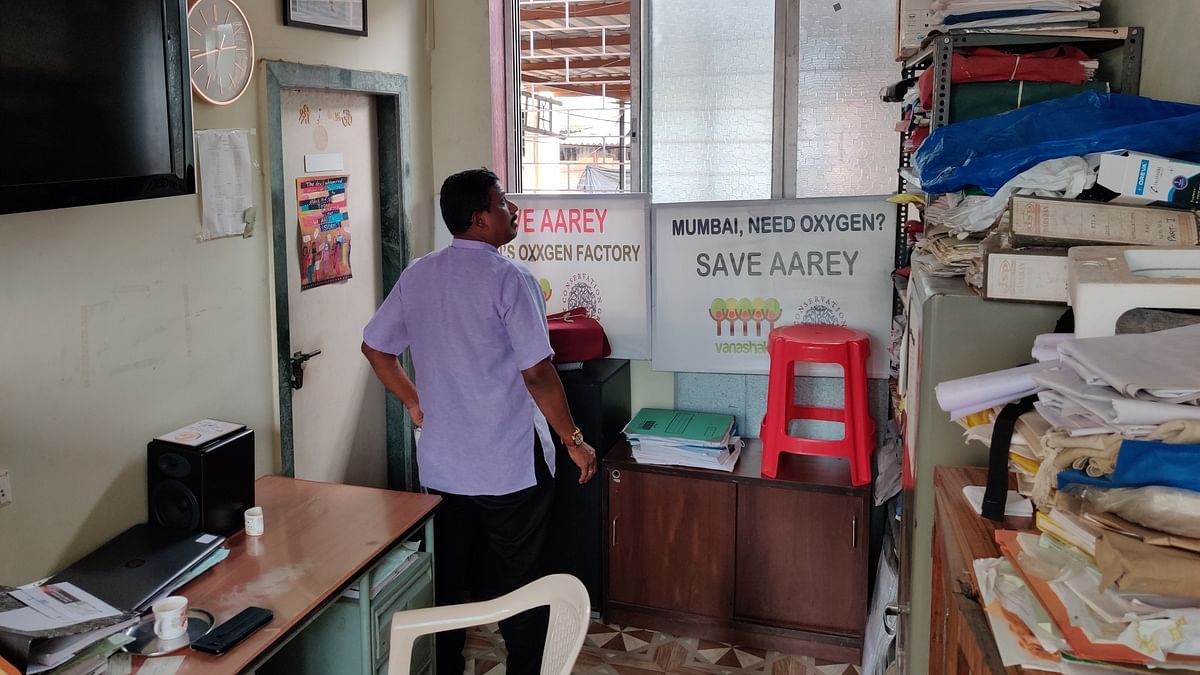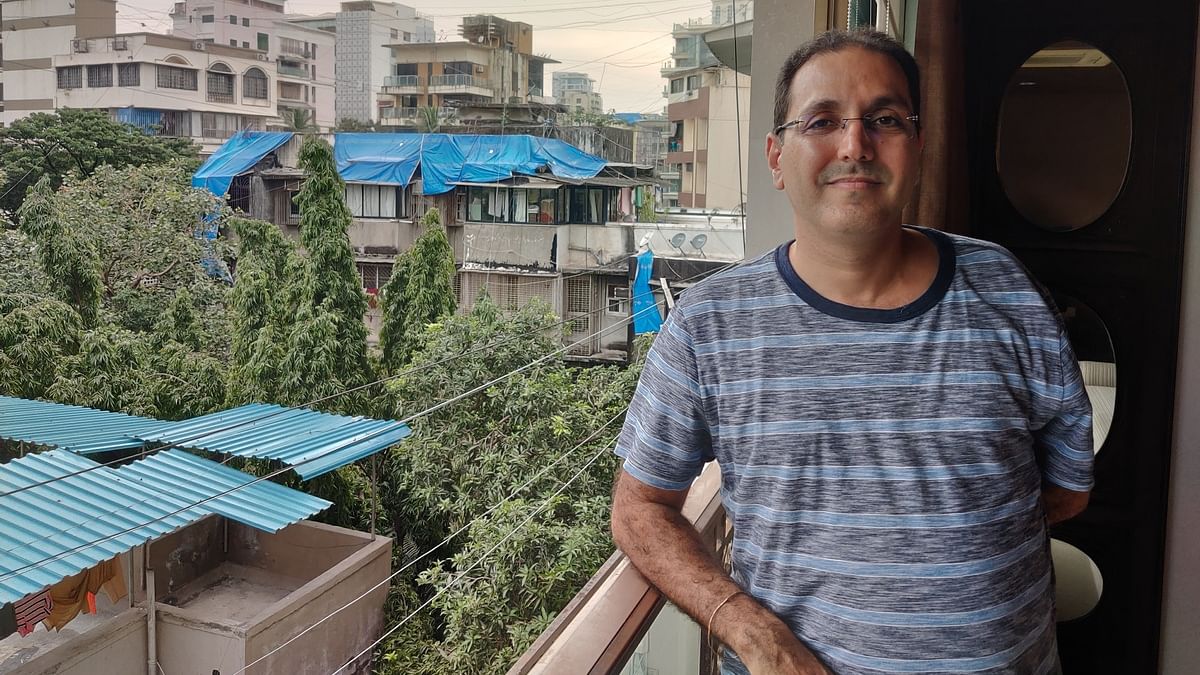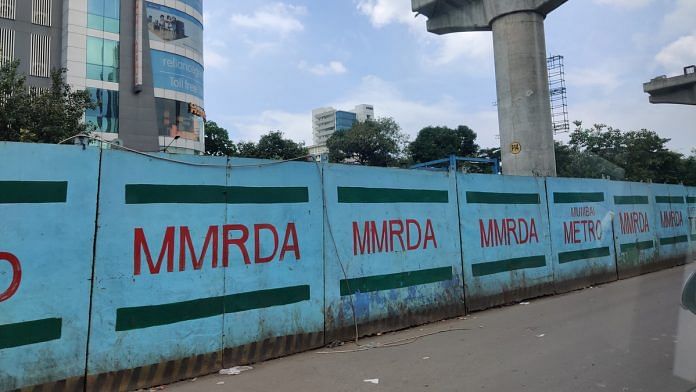Mumbai: “When you’re less than five feet apart, face to face and looking into the eyes of a leopard, then that moment really changes you,” Stalin Dayanand, Mumbai’s “warrior for the wetlands”, tells me.
We are seated in the small, makeshift office of Vanashakti — the environmental NGO where Dayanand works as a project director — in Bhandup East. A narrow gap between two adjacent houses takes you behind the first row of buildings, and a quick flight up a nearly hidden staircase reveals a two-room office where shoes are left outside, the almost-blank whiteboard marks a single date for a meeting, and young interns can be heard washing their dishes after lunch.
From here, Dayanand has become a rather big “nuisance” for the Mumbai Metro Rail Corporation (MMRC), “because I’ve realised that the government just doesn’t listen otherwise”, he says.

Vanashakti, with Dayanand at the helm, is taking the lead on one of the many petitions filed before the Bombay High Court to save Aarey’s biodiversity — a legal battle in which the fate of around 2,700 trees in suburban Goregaon’s Aarey Colony is up against the MMRC’s plan to build a car depot for the Colaba-Bandra-SEEPZ Metro.
For now, under mounting pressure from citizen groups, environmentalists and almost all political outfits barring the BJP, the court has put the Brihanmumbai Municipal Corporation (BMC) Tree Authority’s August decision to allow the felling of 2,647 trees in Aarey on hold until 30 September.
For Dayanand, the respite is only momentary, allowing him and his team of 14 at Vanashakti to take an even closer look at years of development plans and government notices.
“For every claim they’ve made, rather, every lie they try to propagate, I have counter proof. There are documents clearly showing how the government has repeatedly contradicted itself. They might say now that there are no animals in Aarey, but they themselves made an application for installing lights, stating that human–wildlife conflict was on the rise in the area,” he says.
Armed with dates, facts, figures and claims, the business-management graduate talks quickly, our conversation fast evolving into a form of debate that rests on claims and their counters.
The current debate between the MMRC and activists has also come to resemble just that — “perhaps now, even partially a battle of egos between ‘us and them’”, rues Zoru Bathena, a citizen environmental activist.
For the activists, ‘them’ takes the form of Ashwini Bhide, IAS officer and managing director of the MMRC, responsible for putting forth the government’s versions of facts and figures in the public domain.
Also read: Why Mumbai says Aarey Colony protests aren’t only about felling trees for Metro car depot
‘Govt admits it hasn’t even looked for alternative spaces’
Bathena noticed that the trees in his neighbourhood were dying in 2015. “There was a bug that was killing them,” he says. “And I learnt that the BMC was responsible for taking care of them and wasn’t doing its job.”
The Khar-based business owner took the matter to court, meeting like-minded people along the way. Today, he is one of the most visible voices in the Aarey movement, challenging the 29 August decision of the Tree Authority though a PIL on the grounds that it failed to take objections and suggestions from citizens into account, which was an essential procedure set by the high court earlier this year.
Bathena met Stalin in 2016, and was subsequently introduced to the ecosystem of Aarey and its nature enthusiasts. “For anyone who thinks that Aarey isn’t a forest, all they have to do is visit the area — we really don’t have another place like it in Mumbai,” he tells ThePrint.

The sentiment is a significant presence amid back-and-forth public discourse on development and ecology, and Bathena makes no attempt to hide it. But for the activist, the charge that this passion for forests is steeped in elitist nostalgia is unfair and inaccurate.
“Look, we’re not saying that we don’t want the metro. We’re all in agreement — a metro is very beneficial to a city, but the shed itself, which will essentially act as a service centre for parked trains, doesn’t need to be in Aarey because there are viable alternatives that the government admits that it hasn’t even looked into,” he says.
“There were so many options, starting with the other end of the line, which is Cuffe Parade. It’s the government’s land, in their possession, reserved for the car depot, everything is there — but there are some slums on it. Those can be redeveloped, a building can be made above the depot. But two weeks ago, when we had a meeting, and Mrs Bhide and the municipal commissioner were there, she publicly acknowledged that ‘we have never looked at the option of Cuffe Parade.’”
But more than a clashing of wills, the Aarey dialogue has snowballed into a contest of truth — what is the actual size of the Kalina University plot, for example.
“They told us that it’s only 20 hectares, and it’s too small to be considered for the depot. But when we measured it ourselves, it was 50 hectares,” Bathena says, and asks “So why would the government lie unless they’re just looking to avoid minor inconvenience?”
In the MMRC’s final report about surveying alternatives, submitted in October 2015, suggestions were made to have an integrated car depot for two metro lines at Kanjurmarg and a small facility with about 16 stabling lines at Aarey to take care of the immediate needs of the Colaba-Bandra-SEEPZ Metro.
But according to a presentation made by Bhide last week at the Lokmanya Seva Sangh in Vile Parle, “inadequate land area and technical suitability, environment, legal/ownership constraints as well as regulatory constraints” made Kanjurmarg unviable for final construction.
Dayanand, however, alleges that the litigation was the product of the government’s own sleight of hand.
“This plot is part of a survey number, which has 650 hectares of land, which is roughly 1,200 acres. In this entire area, only 270 hectares is disputed by a family that is saying it’s their property, the rest of the land records stand in the name of the Maharashtra government. There is no ambiguity about this. The government files an affidavit in the Bombay HC saying ‘let us use this land for the Metro 3 and six integrated shed’, to which the family responds saying that the particular land that you’re seeking is not in our possession, it is not disputed, nor is it claimed by us.”
“So the government has gone and filed a petition to seek land which is already in their control – why would they do that? After filing it in 2015, the government has not bothered to move it before the courts, so who is delaying the project?” Dayanand asks.
Bhide’s presentation also claimed that the title dispute is pending in the Bombay HC “since 1996 involving private parties and state government, wherein the Bombay HC issued Status Quo orders in 1997.”
“But the MMRC through the state government made sincere efforts to vacate the stay and release the land for the car depot for one and half years, but couldn’t succeed,” Bhide added.
Also read: Aaditya Thackeray speaks up against cutting trees for Metro depot, a pet project of ally BJP
Promise to replant trees isn’t enough and here’s why
Critics of Aarey activists’ ‘idealistic and unrealistic’ worldview see the compensatory promise of planting 14,346 trees as enough to offset the potential damage done to “only” 2 per cent of the colony’s green cover.
But for wildlife biologists like Anand Pendharkar, “these small saplings of exotic, fast-growing plants don’t establish an ecosystem, especially when you’re planting it in a closed, constricted area so close to each other.”
“A single 100-year-old tree,” he explains, “has already established its roots and built a sustainable, self-sustaining ecosystem of orchids, vines, insects and birds resting on it. In a plantation, rivers won’t originate, the trees won’t do flood control.”
Pendharkar further adds, “It’ll take at least 25 years for it to start giving shade and produce oxygen. So we’ll have to suffer for another 25 years, and even then it’s an ‘if and but’ situation, not a guarantee. Because these plantations have already witnessed a 70 per cent failure before.”
Dayanand adds that the MMRC has no experts on its committee and “there’s no transparency about what kinds of trees will be planted, who will monitor and water them, where they are going to be planted.”
It takes a village to fight the green fight
Dayanand, who studied botany, chemistry and zoology from Mumbai University, joined Vanashakti in 2009, roughly five years after it was created. By 2014, two years after plans for the Colaba-Bandra-SEEPZ Metro were approved under the Congress-NCP government, Dayanand was set to become a part of what he calls “the longest fight for a protected area in the history of the country.”
That year, nearby residents and frequent visitors to Aarey spotted notices stuck to trunks of trees, announcing that they were going to be cut for the metro project. A picture was sent on a community WhatsApp group, and the fight for Aarey began at a small meeting with 60 people, “most of whom were mothers,” activist Amrita Bhattacharya tells ThePrint.
Priya Mishra was one such mother, who went door-to-door spreading awareness about the biodiversity of Aarey, carrying signature petitions to Equal Streets — a Sunday movement aimed at reclaiming traffic-clogged roads for pedestrians and cyclists. Mishra, originally a resident of Delhi, was struck by the lack of space in Mumbai — of open places and parks not only in houses and neighbourhoods but also the schools don’t have playgrounds.
“But when I discovered Aarey, it was like a whole new world, and the thought of losing that motivated me to join the movement,” she tells ThePrint.
What makes the Aarey protest particularly interesting is that it galvanised the talents of everyday citizens to become a truly challenging force for the local government. Mishra, for example, with a background in architecture was able to understand and analyse maps, blueprints and the sustainability of development projects.
“Some people are very good at networking so they helped with that, some had an education background in botany and animal welfare. At the end of the day, the experts on forestry and biodiversity, photographers and researchers are citizens after all,” she says.
A sense of responsibility, not just towards the environment, but also for those who depend on it for their survival is what drives Bhattacharya. She had also filed a PIL in the high court in 2017, challenging the Maharashtra government’s decision to change the land use of 33 hectares in Aarey from being a ‘no development zone’ to a ‘Metro 3 car shed’.
“Aarey is home to at least 27 Adivasi villages, as identified by the state authorities themselves,” she says, “and this is their home, not just in terms of geography, but in terms of their entire way of life.”
Battle has become ugly and personal
Bhattacharya also recalls that her residential address was leaked online by “people targeting me for speaking out”.
“There’s so much hate coming our way,” Dayanand also says, “with directed targeting and conspiracies to slander our names, of which DNA is evidently a part.” He’s referring to a recent article in the online publication which reported on “financial inconsistencies” within the NGO. It stated how “A person associated with the Legal Rights Observatory said that while the NGO doesn’t have the clearances required under the Foreign Contribution Regulation Act (FCRA), its website shows options for donations from other countries.”
This battle, however, has managed to pull thousands of citizens from out of the comfort of their homes and onto the streets to #SaveAarey — a mobilisation, despite Mumbai’s rains that takes even the activists by surprise.
The financial capital doesn’t really have a culture of activism or protest. In fact, “getting even 100 people to show up for something used to be a big deal. In 2014, my biggest challenge was finding young people interested in fighting for the environment. Now, it seems like they’re the only ones really listening,” Dayanand says.
Also read: 68% of Mumbai’s citizens say quality of life has improved under BJP-Shiv Sena govt







First: after cutting so many trees the Mumbai metro-3 line is actually between Coloba and Aarey and not Seepz.
Second: I also commented on the other news media that there is a place where you can built a metro car shed without cutting trees like this and its near Aarey and Seepz, yes you can, and its JVLR it self, yes you can use Jogeshwari Vikroli link road as a metro car shed by constructing an elevated road on that particular part of the road.. remember a train car shed needs more area in lengthwise that you can get more on JVLR then the Aarey.
I too agree, if these activist are really hellbound to save Aarey why the focus is only on Metro shade. Since childhood i have been seeing aarey being encroached by all sides and also from within with slums and developers. Always some new tower can be seen that is trying to enter more. Why Royal palms is there. Leopard love concrete jungle? The fight to save aarey must be from all encroachment and not just government. And if target is only govt that makes the whole movement biased.
No but simply govt will not sit idle with removing trees and making car shed they just need one entry and then we will not see Aarey anymore on map ideots please understand you live in India not overseas
In my opinion people who are fighting to save Aarey forest are not nuisance. They have valid point. Government need to think out of box and act on alternatives.
We have Government which listens. I am sure there will be some way out to save Aarey forest.
Even after 30th Sept we hope that green cover continues.
Chinese sponsored organisation
the MMRC has to just start releasing the orders to Chinese companies . these NGOs will vanish
Absolutely right . Which is why the Chinese have managed to stall the construction of all 14 metro lines in Mumbai and around 27 metro projects across the country . In fact the Nagpur and Noidametro was the smoothest because Chinese companies won the contract.